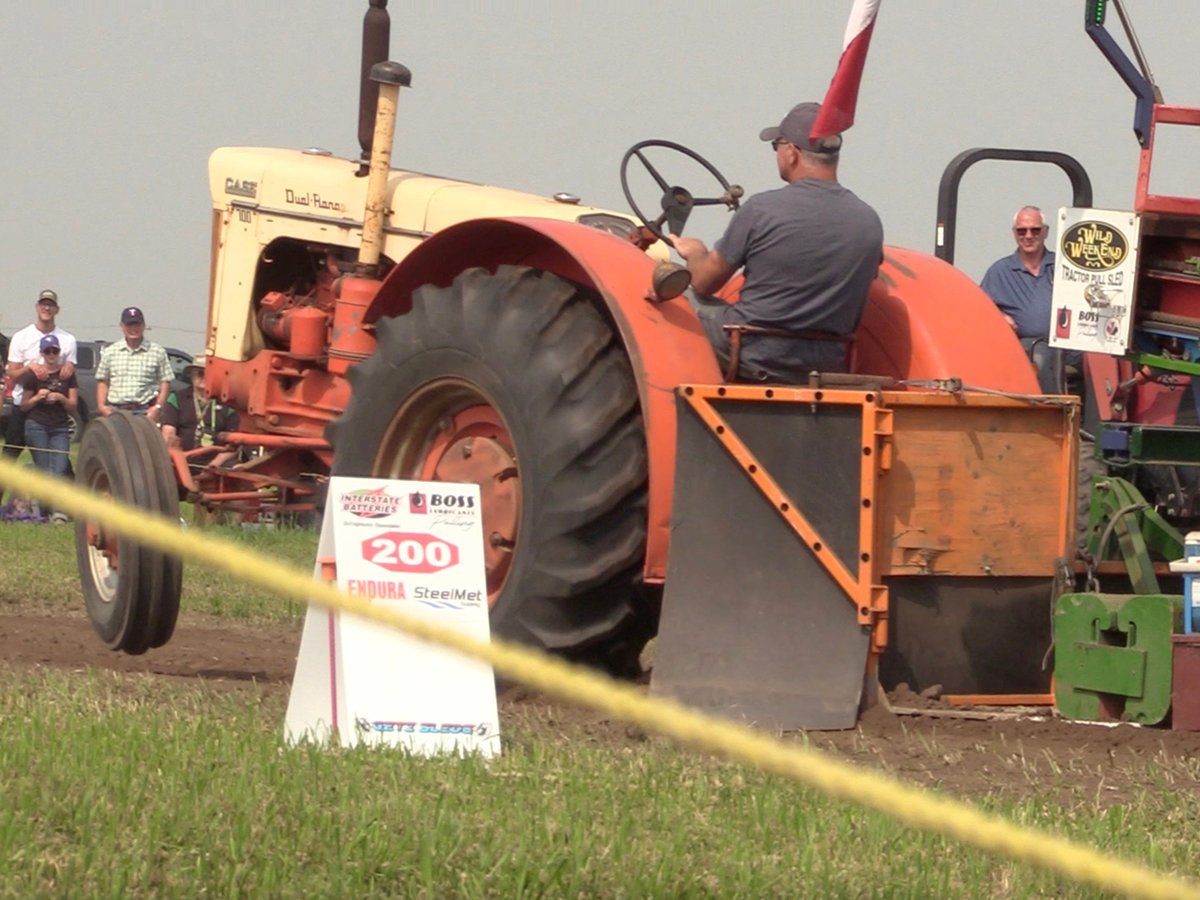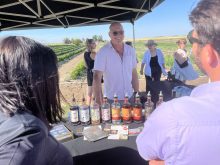CRAIK, Sask. – An entrepreneur has a simple message for farmers: if they grow flax and burn the straw, they are missing a business opportunity.
Larry Turgeon, a former Saskatchewan farmer who now markets the health benefits of flaxseed from the United States, is building the proof that flax straw is useful. With the help of two other people, he built a flax straw bale building in three days last month near Craik.
Many farmers burn the stubble because the flax straw is so strong that it will plug up farm machinery if incorporated into the soil. However, Turgeon said the straw makes a cheap construction material.
Read Also

Vintage power on display at Saskatchewan tractor pull
At the Ag in Motion farm show held earlier this year near Langham, Sask., a vintage tractor pull event drew pretty significant crowds of show goers, who were mostly farmers.
He built a 2,100 sq. foot building using 300 flax straw bales that cost him $3,000. He said the total cost of the free-standing bale building is $40 per sq. foot, about a third of conventional.
“These walls have zero wood,” said Turgeon, patting the newly painted stucco wall.
He prefers flax straw because it will not rot or mould like wheat or barley straw.
The bales are stacked on a concrete footing and strengthened with rebar. The walls are encased in stucco and the building is topped off with a metal roof.
Turgeon plans to open the Craik building as a commercial enterprise this fall that will package flax health food and cosmetic products and flaxseed bags for treating sprains and other therapeutic uses. He sells the products mainly in the U.S. but is developing Canadian markets.
He will also operate a school in the building to teach people how to build using flax straw. He has four stockpiles of flax bales he made from his own baler to sell to people who want to build barns, houses and outbuildings. Turgeon said straw bales encased in stucco or cement would also make a sturdy fence.
Turgeon ventures farther down the environmental trail by creating his own power using a wind generator, solar panel, inverter and batteries.
“It’s free,” he said, compared to the $25,000 that Sask Power intended to charge him to run a line to the building. He also has a composting toilet and collects rainwater.
“We’re totally self sufficient.”
He located in Craik largely because of the town’s recent foray into the environmental movement. With help from government grants, the town built an eco-centre that stands within sight of Turgeon’s yard. It houses a restaurant and golf course clubhouse and provides meeting rooms. A hemp clothing and health food manufacturer plans to move in by next year.
Two stands of poplar trees have been planted nearby as part of a carbon sequestering effort to harness greenhouse gases. As well, Craik is selling lots to people who want to move to the town and build ecologically sound houses.
Turgeon read about the eco-centre on a website and came across the border last fall to look at it. He had farmed in the area years ago and knew many of the local residents. He decided to join in the effort with his bale building.
He buys most of his flax from farmers who follow his strict rules: grow it on pea stubble; don’t handle it much and keep it out of retailers’ bulk bins.
He also is fussy about his bales, requiring a three string size of two feet by 16 inches by four feet. When nearby hemp farmers asked him to try baling their crop he only did a few demonstration samples. The hemp has a thicker stem and is too hard on his baler, he added.
Turgeon’s interest is personally motivated.
“My grandchildren may not be able to afford to buy their own homes. This technology makes it possible.”
He leaves it to others to fight the bylaw battle in cities that may not allow bale houses in their jurisdictions. Rural areas and farms are more open to such affordable innovations.
In another spinoff, he is receiving a government grant to help men who have been released from prison and living in halfway houses to learn the skills to build bale structures.
“They’re not bad guys but they will be, without direction. You don’t have to be a rocket scientist to build a bale home.”
Turgeon said he will stay in Craik this fall “until it gets cold or until I’m not needed.” He spends winters in a straw bale house he built in Arizona, but he intends to build a summer home next year just north of his commercial building in Craik.
The 65 year old attributes his good health to eating four tablespoons a day of fresh ground flax. It provides omega 3 oil for heart health, cleans the bowels, aids in weight loss and lubricates joints.
For more information, visit Turgeon’s website at www.flaxbales.com or phone 602-881-3529.
“I want people to ask me questions and grill me,” Turgeon said.
















